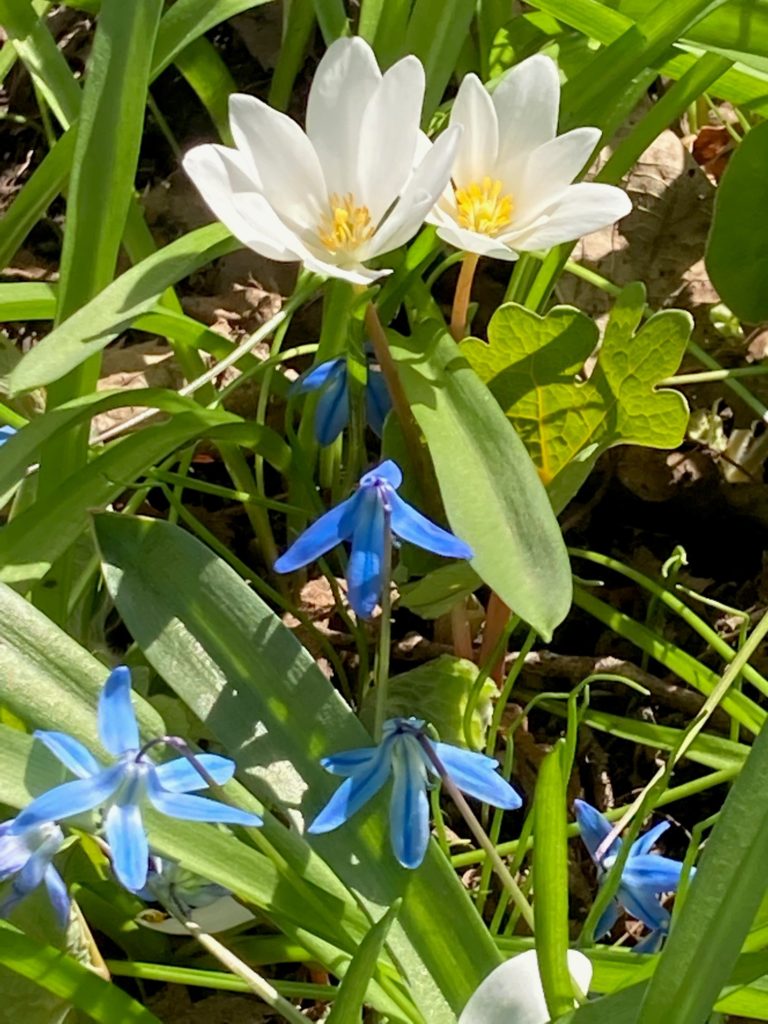
Postcard: April 19, 2021



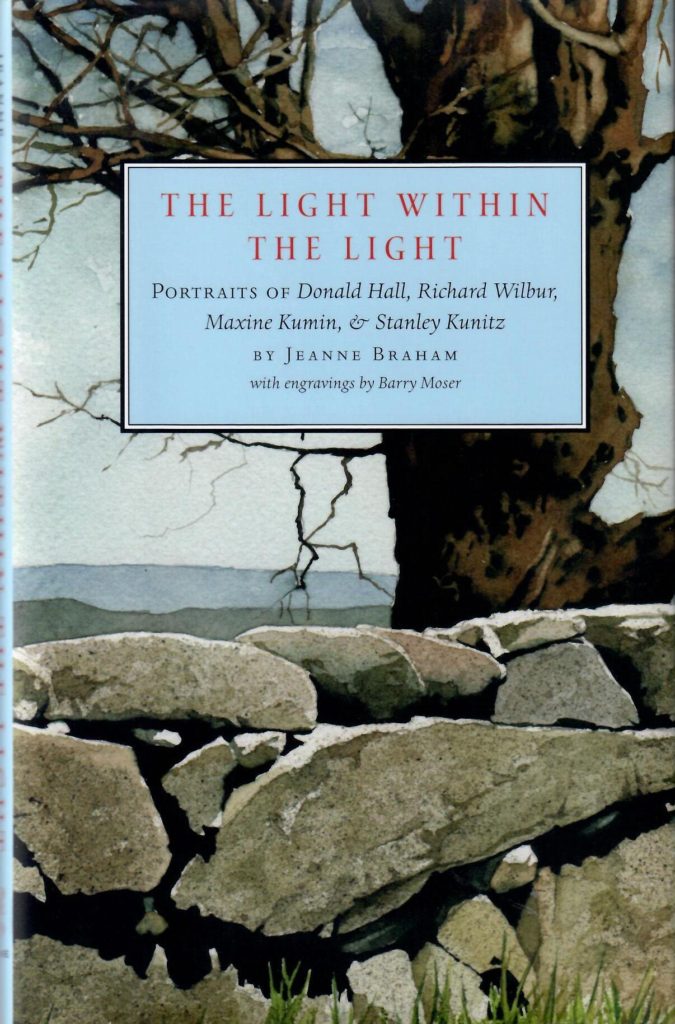
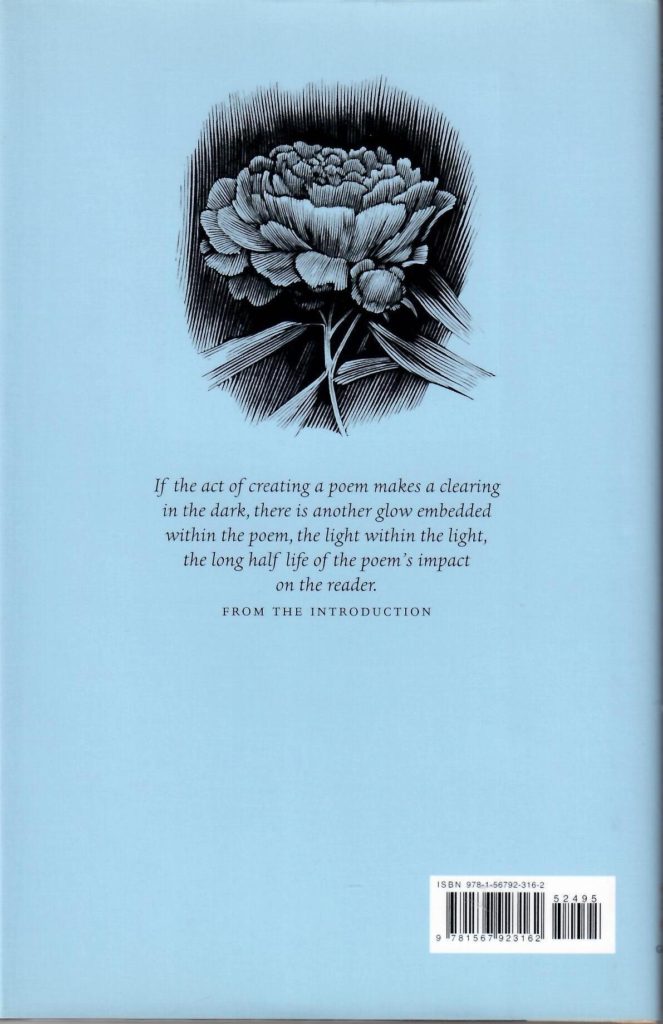
This slender volume, The Light Within the Light: Portraits of Donald Hall, Richard Wilbur, Maxine Kumin, & Stanley Kunitz by Jeanne Braham, with engravings by Barry Moser (David R. Godine, 2007) is a joy to hold, to look at, and to read. Braham’s prose is both polished and lively, and she succeeds in her aim of creating short (twenty pages or so) portraits of four New England poets whose work matters to her. It is a difficult and precise art, knowing what to include and what to leave out, and Braham knows unerringly which lines to include. This concision makes her prose a natural companion with the engravings of master engraver and book illustrator Barry Moser, a transplant to Massachusetts. (See some of his ambitious projects at the site of his Pennyroyal Press.)
I came to this book already knowing the poetry of Hall, Wilbur, Kumin, and Kunitz, but I think that this fine portraiture (which includes poems and excerpts from interviews for each poet profiled) would make a good introduction to this quartet of complex writers, too, for someone who did not know much about them but wanted to know a little more and was uncertain where to begin a new acquaintance.
Regarding the Poem “Lemon-Lime”: Today’s poem is a fictional conflation of memories of being young and often mute, about the pain that comes from uncertainty and not knowing when, whether, or how to speak out, and how to know if speaking up helps or perhaps might cause more damage, even if the right words can be found in the right moment. Today, when I am no longer young (older than the Wife of Bath!), the pendulum has swung the other direction, and the more difficult thing, at times, is to bite my tongue. Same problem and same pain of uncertainty.
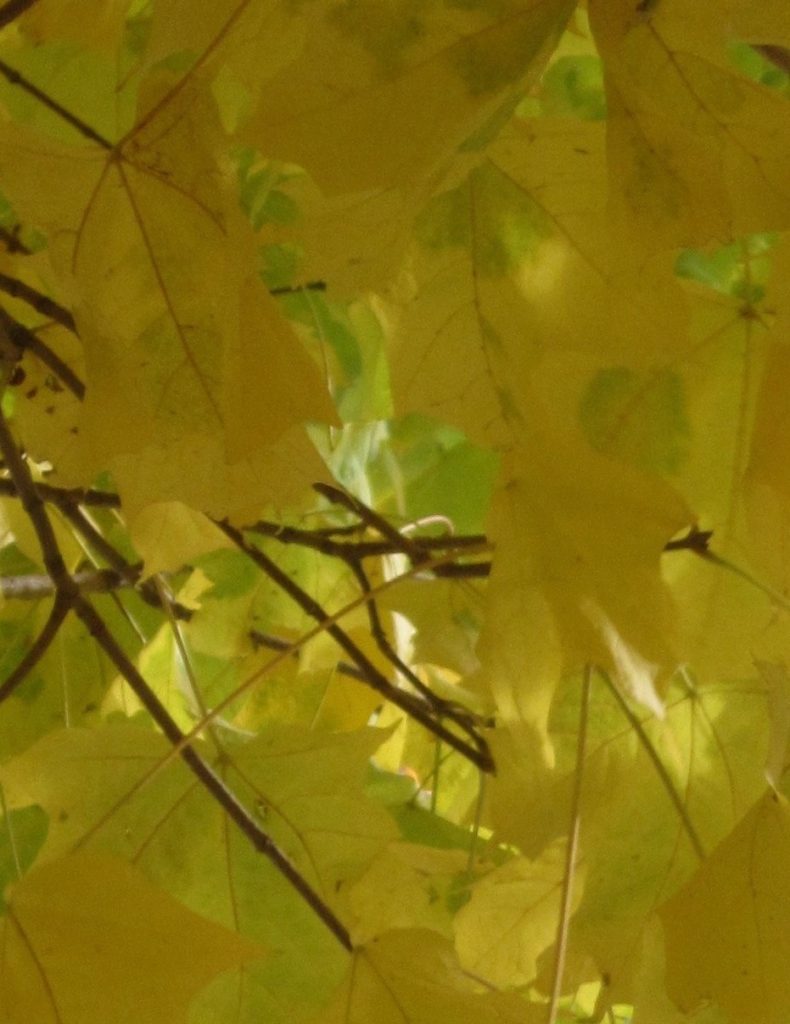
Until tomorrow,
LESLIE
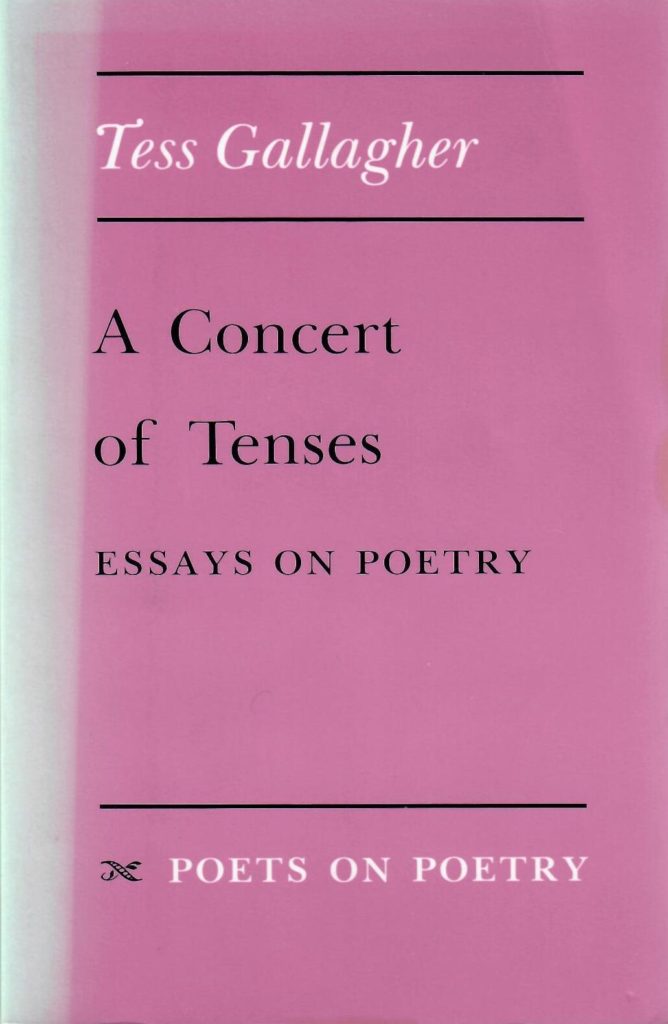
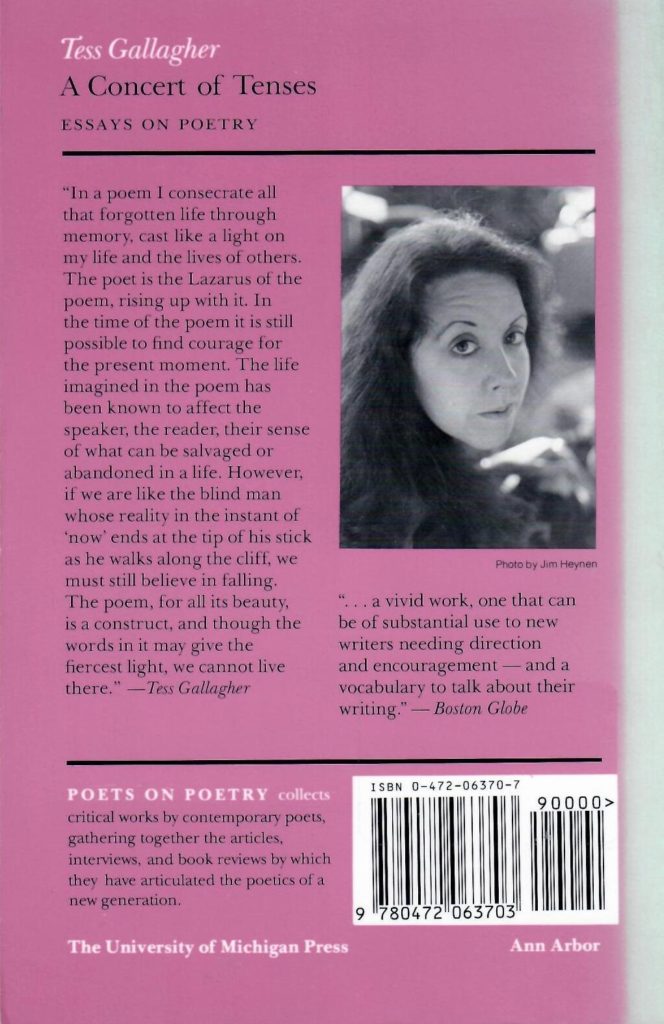
My copy of poet Tess Gallagher’s A Concert of Tenses: Essays on Poetry (The University of Michigan Press, 1986; part of the Poets on Poetry series, Donald Hall, Editor) was a gift from my friend, Doris, in 1994 from the now-closed Hungry Mind Bookstore in St. Paul. It is heavily underlined, particularly under eloquent passages connecting poetry and memory, as in the essay titled “My Father’s Love Letters.” Gallagher grew up, as I did, for a time, amid the logging-fishing-papermaking landscape of the Pacific Northwest, and she also suffered the death of a brother when she was twenty. (I was just turned twenty-one when my own brother died.) When I read this passage, I felt she was speaking for me:
“After my youngest brother’s death when I was twenty, I began to recognize the ability of poetry to extend the lives of those not present except as memory. My brother’s death was the official beginning of my mortality….It was as though memory were a kind of flickering shadow left behind by those who had died.”
This collection of essays is filled to bursting with thoughts that catch me up. Definitely time to read these essays with the even stronger sense of my own mortality and joy in poetry that I have now, a quarter-century later!
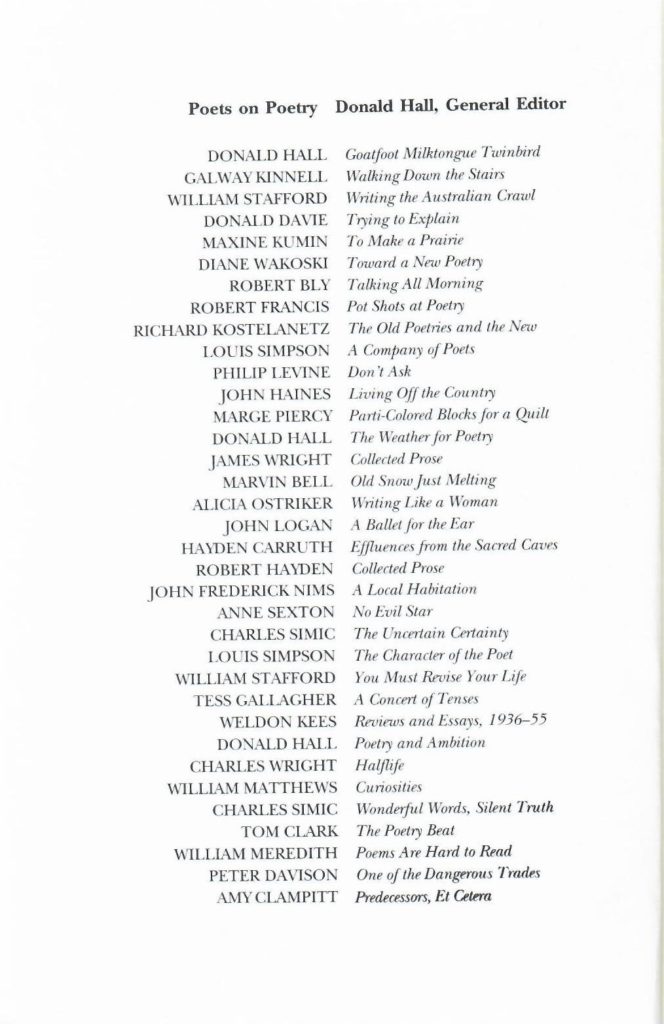
I have to confess that looking over this list engenders “poetic essay lust,” if such a term exists. I don’t have many of these, but I have a long-standing reverence for the poetry of Amy Clampitt and a fairly recently kindled blaze of admiration for the poetry of William Matthews, so perhaps I will be filling in the gaps of my shelves later this year. For now, I will simply say “Thank you, Donald Hall and the University of Michigan Press” for assembling this chorus of thought on a subject important to us all!
Regarding the Poem “Mizzling”:
As an early responder noted, this poem emerged from a painful memory, not one I recall very often but evoked by thinking about that word, “mizzling,” and the near constant rain of my grade school days in Oregon. I remember that walk to school, and that my shoes were almost always wet. I remember losing the coins and being plunged into despair, and that it was lightly raining. I don’t remember if I found them or which coins, exactly, I was allowed to take, but my amateur coin-collector dad had all of those mentioned in the poem in his collection. We did spend hours discussing and examining coins (and also currency), an enthusiasm that Dad had gained from his first job as a paper boy. He also had a vast collection of WW II “steelies,” the subject of a poem during my first year participating in the April poem challenge.

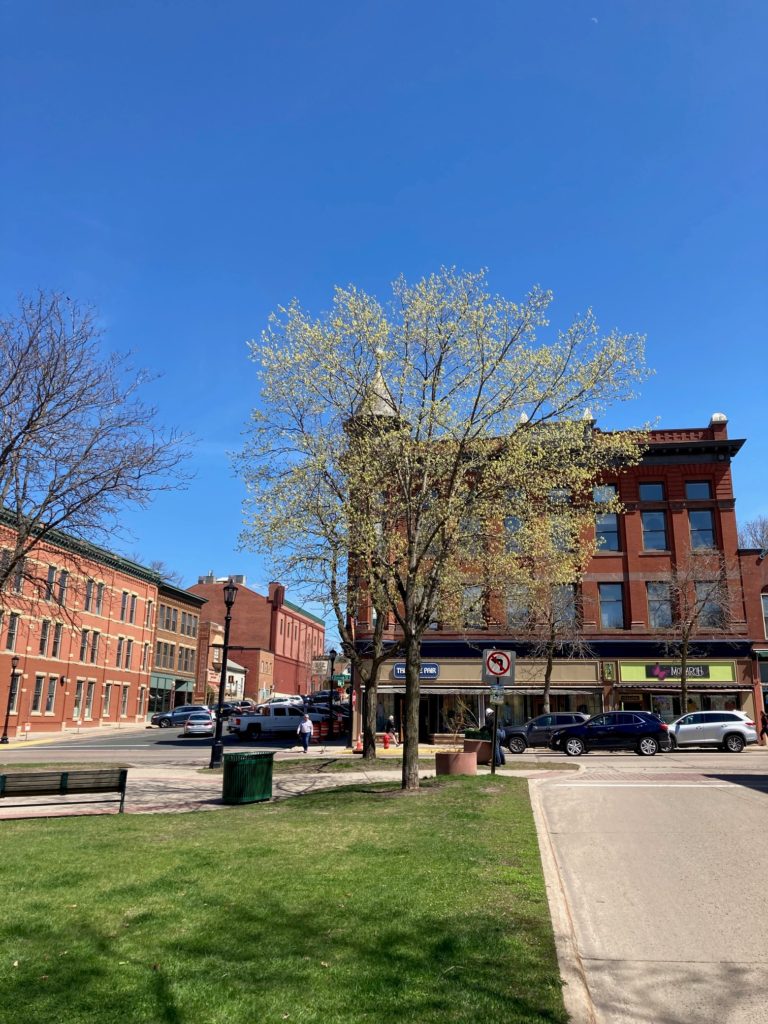
Until tomorrow, yours from a sunny and sweet April day in Northfield, Minnesota,
LESLIE
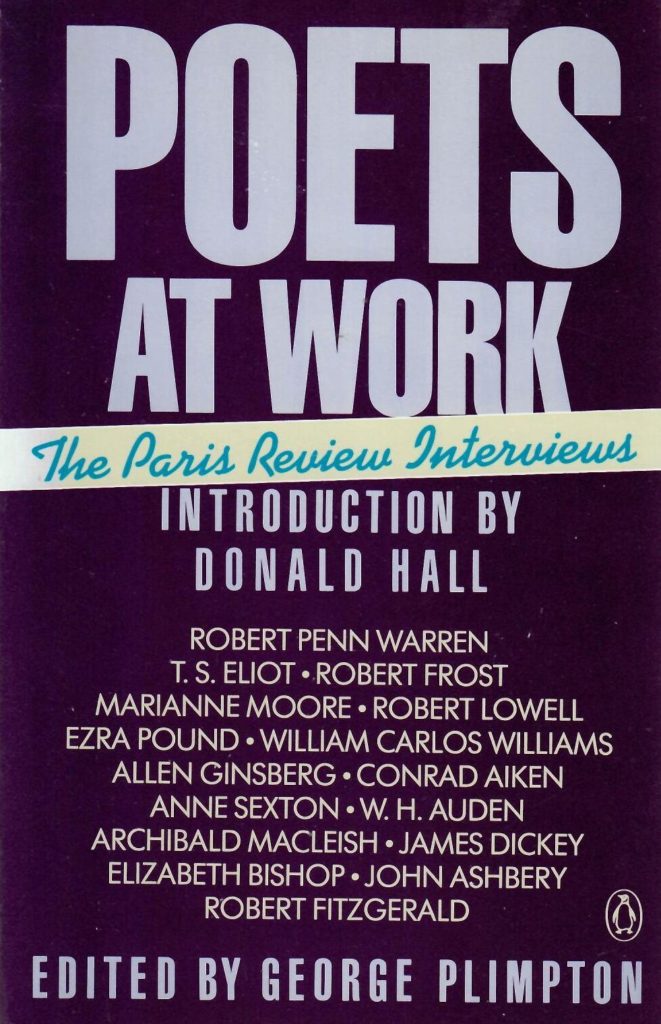
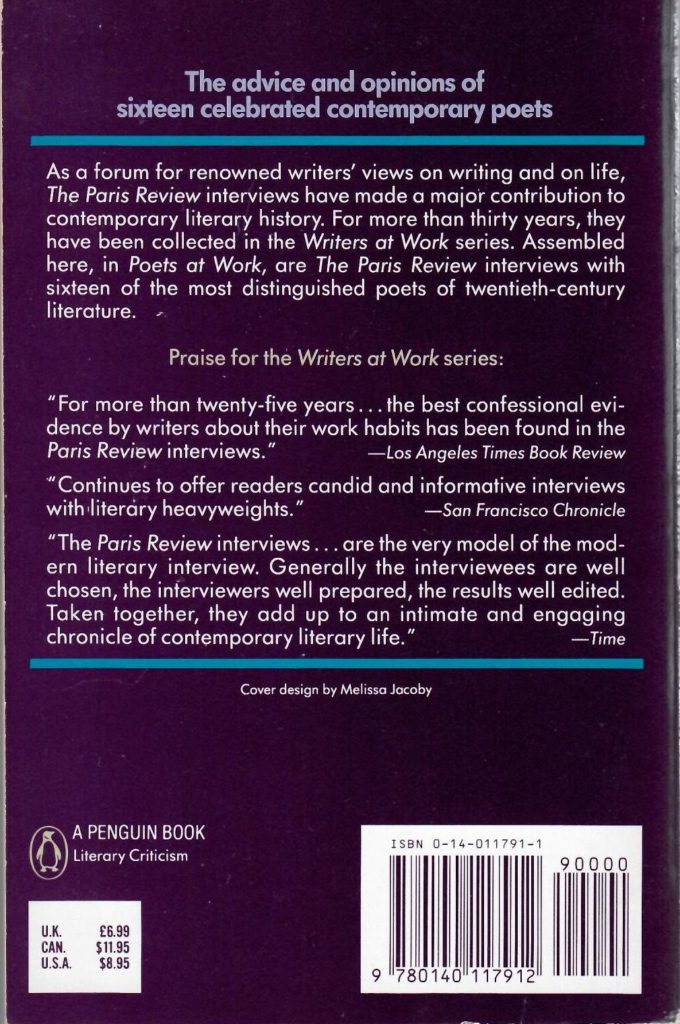
This collection of interviews, Poets at Work (Penquin, 1989), conducted over of many years under the auspices of The Paris Review and the editorial eye of George Plimpton and introduced by Donald Hall, is a repackaged subset of the larger and more well known, multiple volume Writers at Work series (I-VI). The several interviews with poets in series VII and VIII (Philip Larkin, May Sarton, John Ashbery, Joseph Brodsky, Derek Walcot, and Robert Fitzgerald) are, lamentably, not included here. What is included, however, allows the reader to eavesdrop on conversations concerning the nuts and bolts of writing practice, as well as broader topics of biography, temperament, craft, subject, and theme for a diverse group of highly accomplished poets of the twentieth century.
Almost as interesting as the interviews are the interviewers and what they bring to the conversation. For instance, Donald Hall, an esteemed poet himself was a founder of The Paris Review, and was a true man of letters, winning kudos not only in his poetry but in his many books for children, and prose writings, as well as for his prolific work as an editor. Hall was the interviewer for these conversations with T.S. Eliot, Marianne Moore, and Ezra Pound. Elizabeth Spires, another acclaimed poet, whose books for children include The Mouse of Amherst, interviews Elizabeth Bishop. (Hall posits, in his introduction, that this interview might be the best of all, because Bishop knows how to tell a story well, and shares a story of a poetry reading by young Robert Lowell.)
The interviews stand alone, but taken together they add up to a sum greater than their parts. It is not mere gossip, but rather the multiple points of view toward each other, and toward the employment of an exacting (yet hazy, too) craft at a particular time and place in world history. Hall concludes his introduction by musing about this sense of generosity and community that underlies the literary enterprise in poetry, exploding the stereotypes of alienated loners working in isolation. He writes, “This community is not–or it need not be–the sordid business of favor trading; nor is it merely a series of acts of kindness, like Boy Scouts helping old folks across the streets. It resembles more nearly the DNA that uses human bodies to replicate itself. This collaboration supports a mutual and enduring endeavor. Poets do not take turns helping each other over difficulties. They work together to build the house of poetry.”
Regarding the Poem for April 16, 2021, “Nuance”:
Today’s small poem comes from pondering the letter “N” and from wondering about the boundaries between defined thises and thats. When does a cloud become rain or snow? Or dew? Or fog? The beautiful and mesmerizing shifting between one state and another (when does ripening become decay? Or blossom become fruit?) applies to states of perception and identity, too, of course, and this indeterminancy seems hard-wired (?!) into the fabric of the universe, and so into us. Who knows what we will each do next?
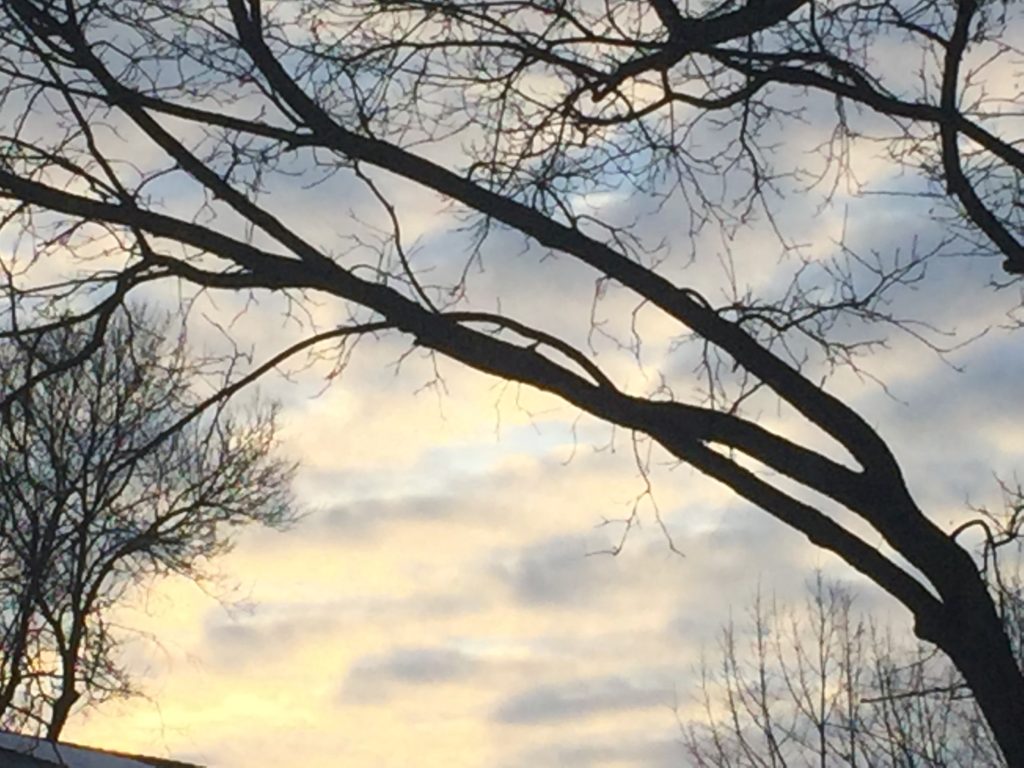
Until tomorrow,
LESLIE
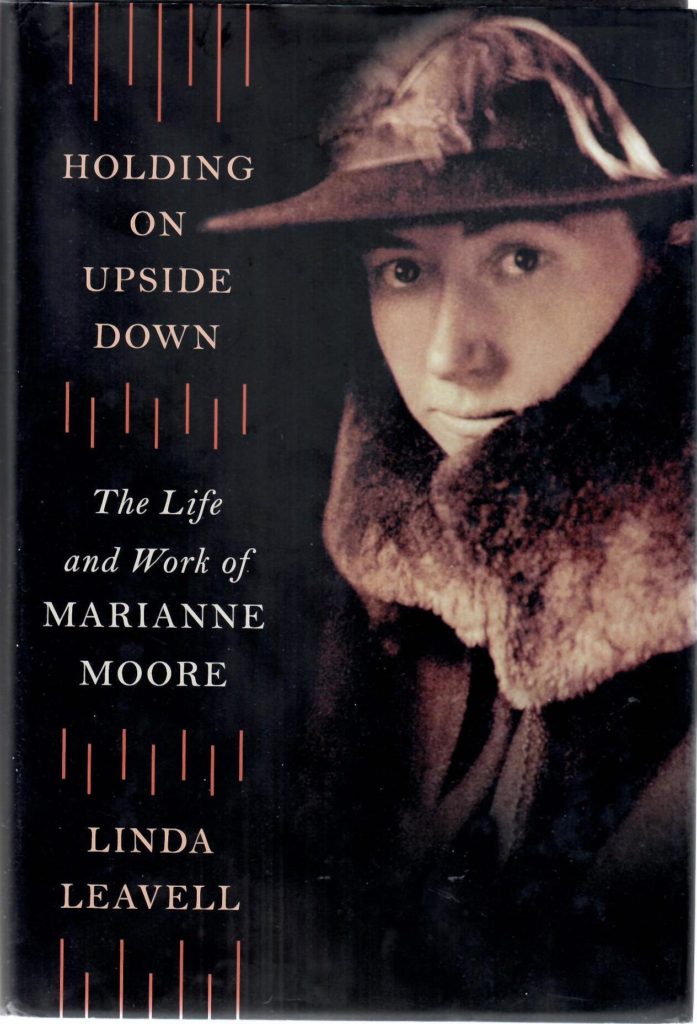
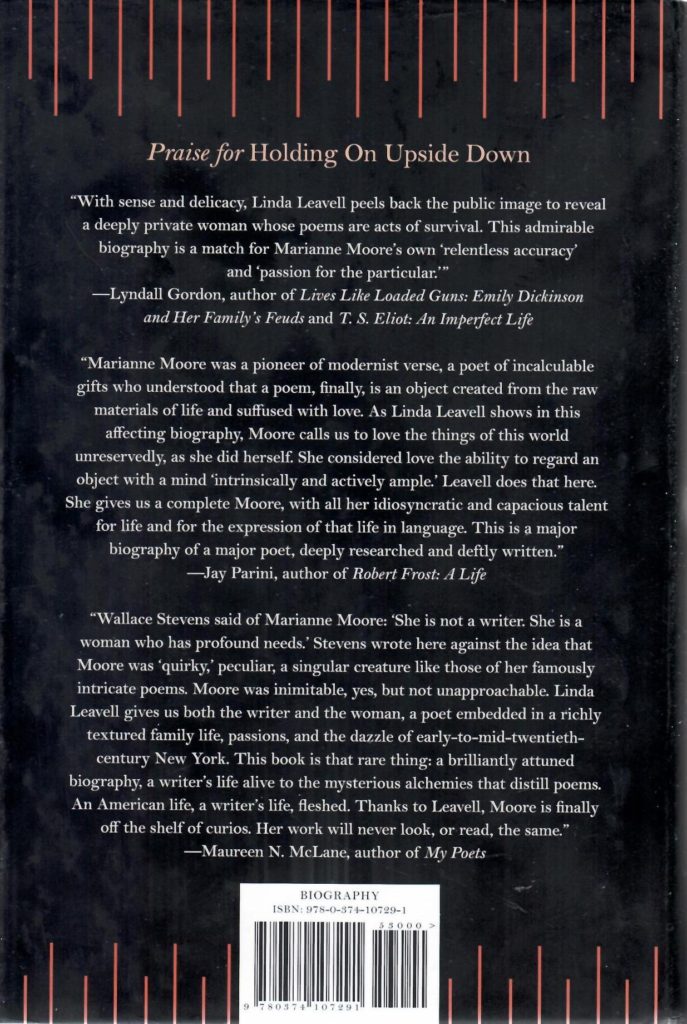
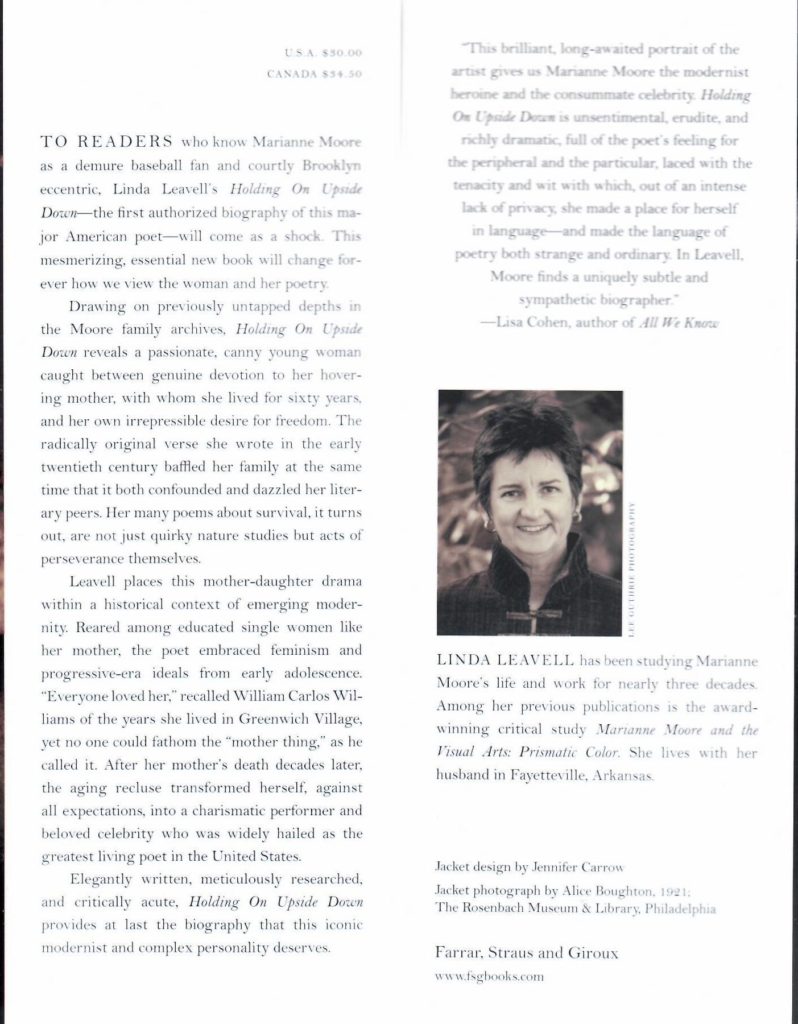
This biography of Moore begins with the pivotal trip she made at age 28 in 1915 to New York City, a trip that included a visit to 291, the gallery and studio of photographer of Alfred Steiglitz, headquarters for the magazine, Camera Work, and a gathering place for young modernists of all genres. The biographical study contains all the elements one would wish in the life of an artist (extensive notes, appropriate concision to enhance the reader’s pleasure, a detailed family tree, ample photographs, and a good and balanced treatment of the details of domestic life, friends and family influences, broader cultural milieu, and the intersections of art and life. Of particular pleasure in this work is the judicious use of excerpts from letters to and from Moore.
Moore’s often-anthologized poem, “Poetry,” supplies the title for this biography. (Knowing of her love for animals, see if you can spot the reference!)
Suffice to say, this was a superb literary biography, and it is helping me to read Moore’s poetry with more understanding than I could muster on my own. I have always been a little afraid of her work, somehow (those daunting syllabics!) Yet, I was a little sad to finish it last month, and so, on the strength of that experience, and to prolong it, I sought out a copy of Leavell’s first book, Marianne Moore and the Visual Arts: Prismatic Color (Lousinana State University Press, 1995.) I am keeping it for a treat, to read this summer.
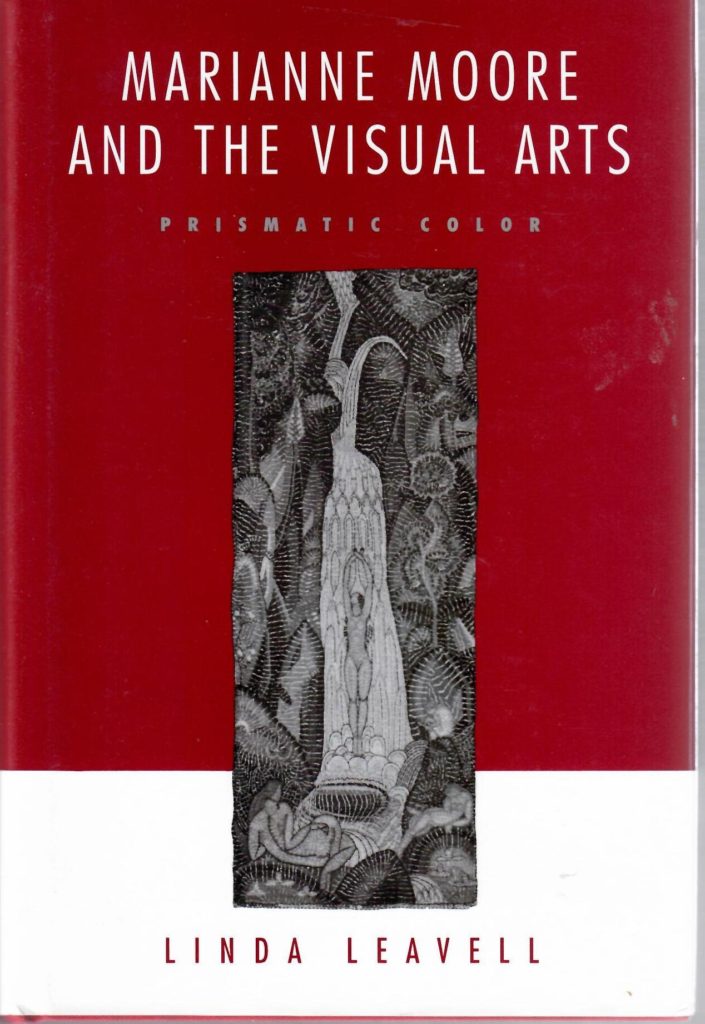
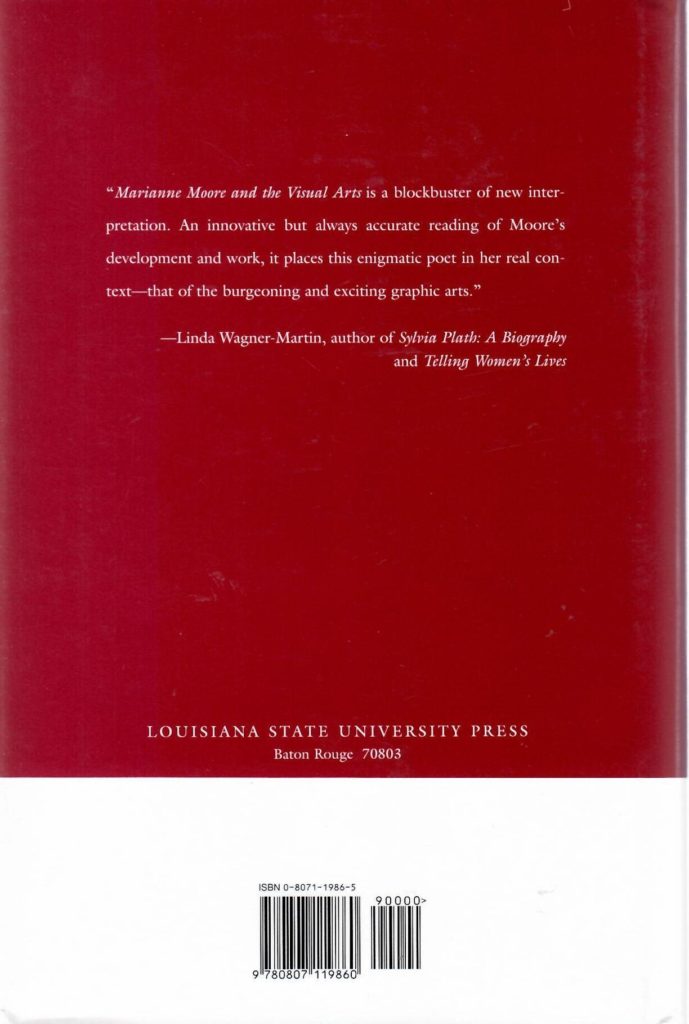
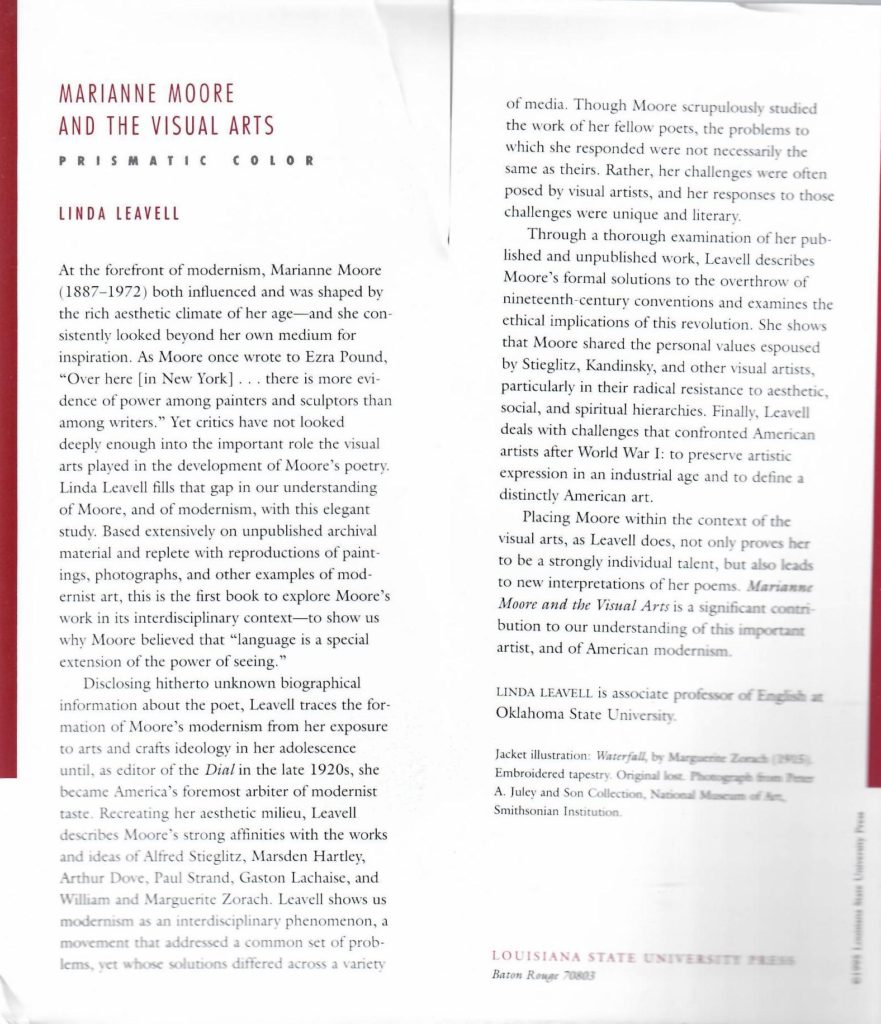
In addition to helping me toward new understanding of Moore’s work, Leavell has helped me understand the modern art movement, more broadly, and its questioning of traditional forms, its exploration of shards and jarring juxtapositions and collage and pastiche–in music, the visual arts, popular culture, and the literary arts.
(I am also wondering, but have not established, whether Linda Leavell might be the sister of poet Ava Leavell Haymon of Louisiana. If so, how lovely to have a powerful scholar of poetry and a powerful poet in the same family.)
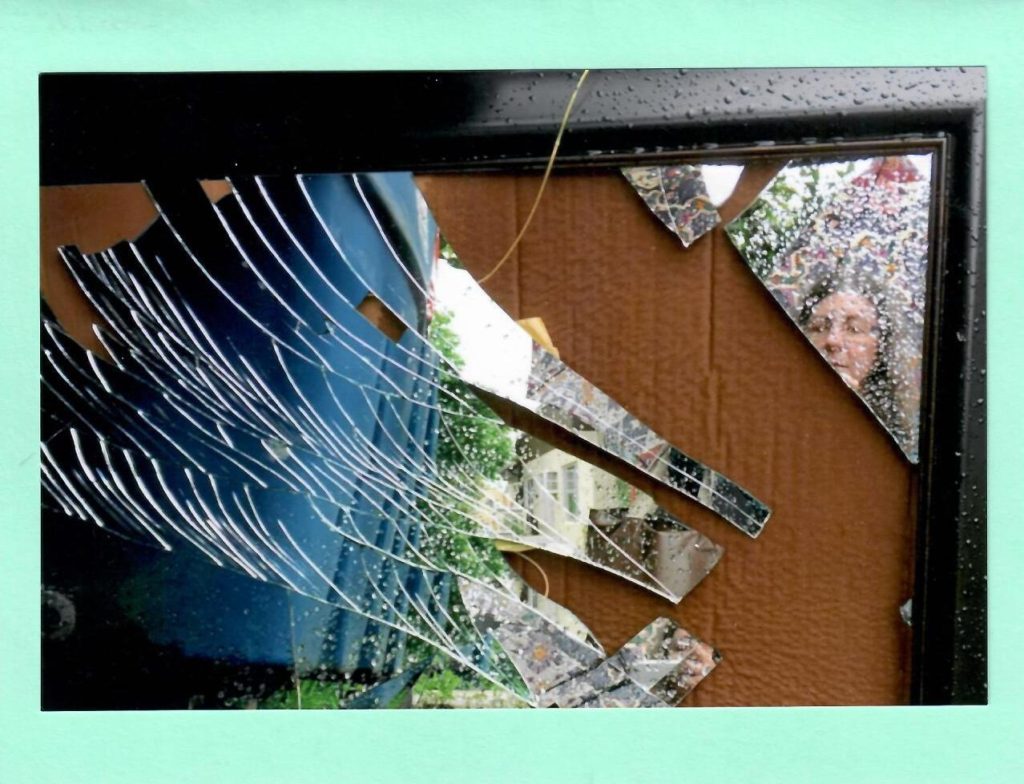
Regarding the Poem for April 15, 2021: “Orison”:
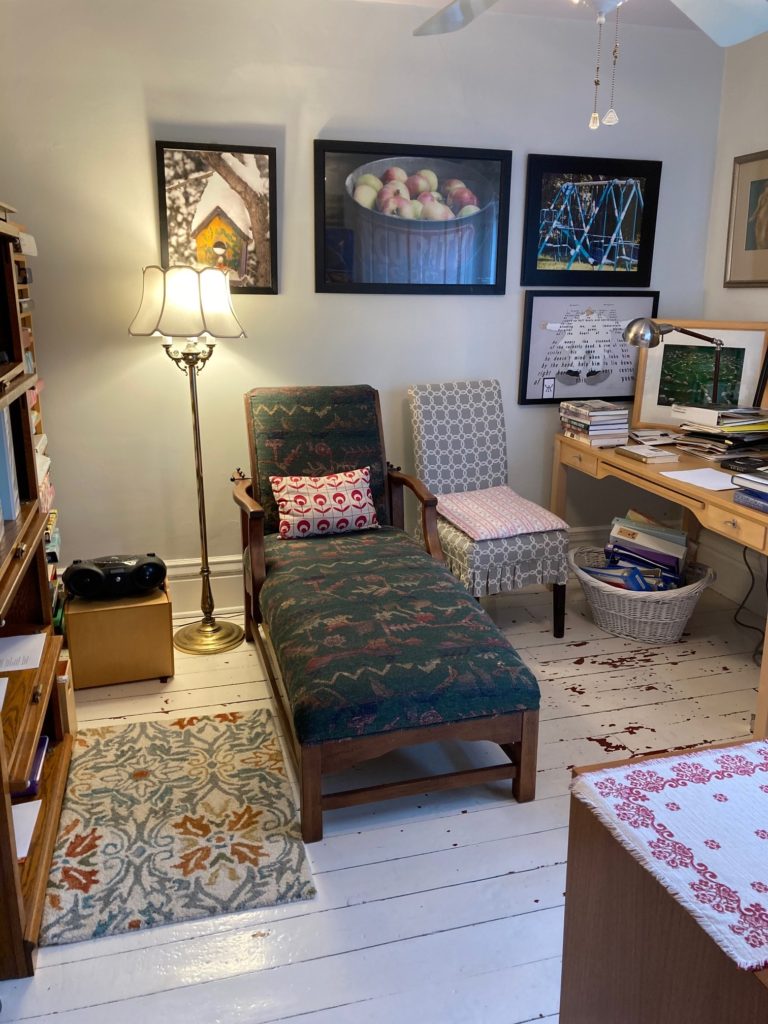
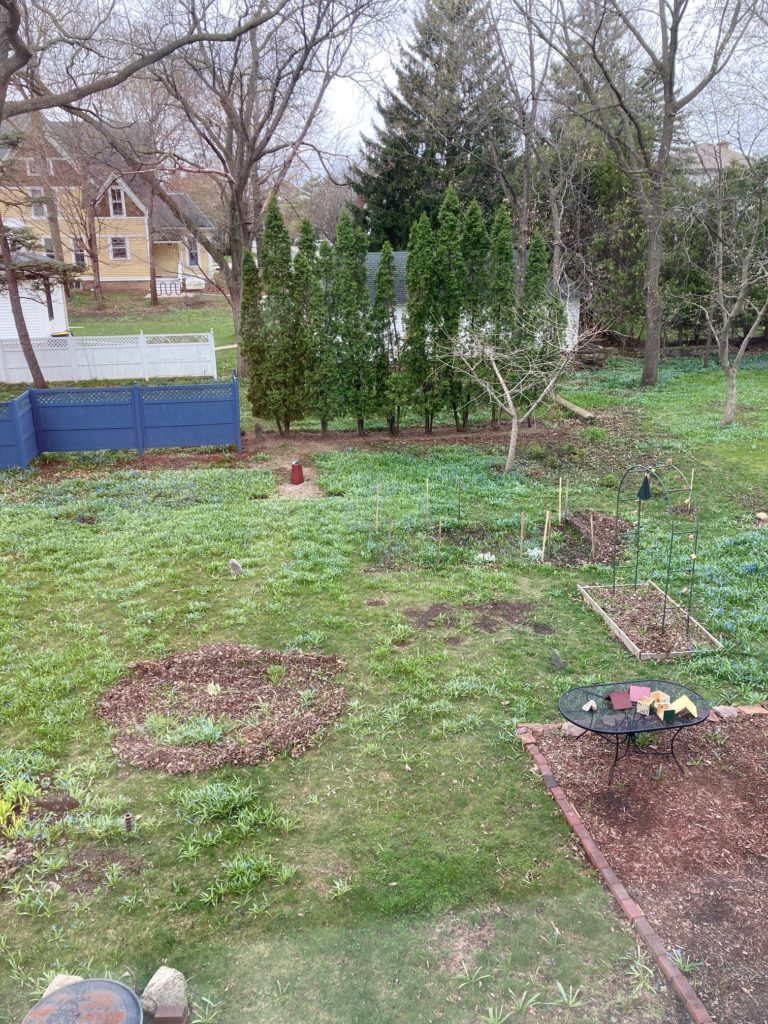
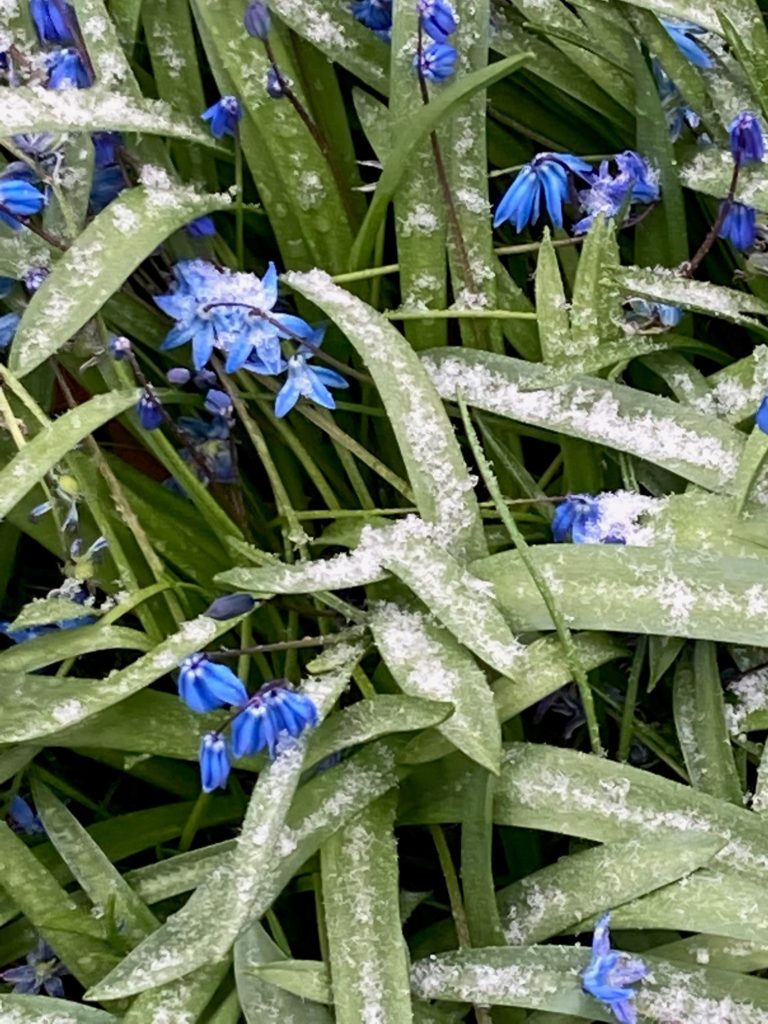
Until tomorrow!
LESLIE